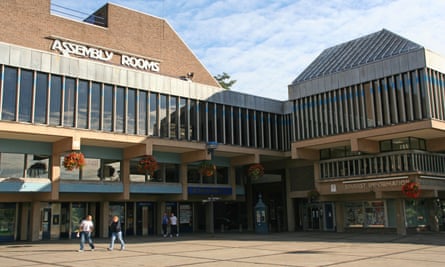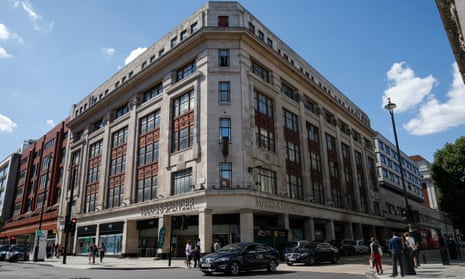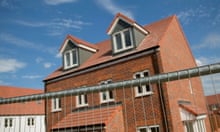There is a new front in Britain’s planning wars. Rows over obstructed views and architectural style are being elbowed aside by concerns about the carbon footprint of new buildings.
This week, Marks & Spencer became the latest company challenged over its climate impact, when opponents warned that the planned demolition of its 90-year-old flagship store on Oxford Street and replacement with a new structure will create so much carbon dioxide that 2.4m trees would need to be planted to offset it.
The City of London is facing pressure over designs for new courts and offices on the site of six demolished buildings off Fleet Street after an independent academic estimated it would cost 19,000 tonnes of CO2 more than an alternative scenario based on refurbishment and extension. The destruction of almost an entire city block was granted consent earlier this year.
And in Derby, plans to bulldoze the 1970s brutalist concrete Assembly Rooms rather than refitting it for future use are reckoned to use CO2 equivalent to driving around the world 738 times.
The focus comes amid rising concern at the impact of construction on the climate. The World Green Building Council calculates that buildings are responsible for 39% of global energy-related carbon emissions: 28% from energy needed to heat, cool and power them, and 11% from materials and construction. The production of cement accounts for 8% of global carbon emissions, according to research by the Chatham House thinktank.
There are signs that planning officials are starting to give greater weight to the carbon footprint of new buildings.
Earlier this month, Michael Gove, the secretary of state for levelling up, housing and communities, rejected a plan by the architect Lord Foster to build a 305-metre viewing platform in the City of London, citing its “highly unsustainable concept of using vast quantities of reinforced concrete for the foundations and lift shaft to transport visitors to as high a level as possible to enjoy a view”.
Developers counter that new more energy-efficient buildings will in the long term prove more carbon-friendly.
On Friday, the countryside campaign group CPRE, which is increasingly scrutinising the climate impact of housebuilding, called for the government to give local authorities greater powers to refuse planning applications due to concerns over carbon emissions.

Will Hurst, managing editor of the Architect’s Journal magazine, whose RetrofitFirst campaign commissioned the Derby and London carbon calculations, said: “Our throwaway building culture is one of the key reasons that UK construction has such an appalling carbon footprint. The planning system could make re-use of existing buildings the default.”
“If Marks & Spencer is serious about zero carbon, it needs to rethink its plans and retrofit its buildings, not demolish them,” said Geoff Barraclough, Labour’s shadow cabinet member for planning at Westminster city council, after the scheme was granted planning permission on Tuesday.
Nicholas Boys Smith, who chairs the advisory board of the government’s Office for Place, which is tasked with driving up design standards, described the M&S scheme as “wasting embodied carbon” and said the retailer has “got this one very badly wrong and should rethink”.
Marks & Spencer said its historic home is no longer fit for purpose and after 16 years of operation its new building will offset the carbon impact of its construction and will be more energy-efficient. Sacha Berendji, the company’s property director, said it “positively contributes to our net-zero targets over the long term”.
The City of London, which is the developer and planning authority for the courts project, said it is targeting net-zero carbon emissions for the whole Square Mile by 2040. It said calculations used to criticise the plan only considered the upfront carbon impact and did not account for the buildings’ impact over their expected 125-year design life.
A spokesperson said the scheme “will reduce energy demand through effective insulation and includes green roofs and an all-electric heating and cooling system, using ground-source heat-pump technology and power sourced from 100% renewable supplies”.
Derby city council said refurbishment would only add up to 20 years to the life of the Assembly Rooms, while the plans for a new facility would have a 40-year design life.










